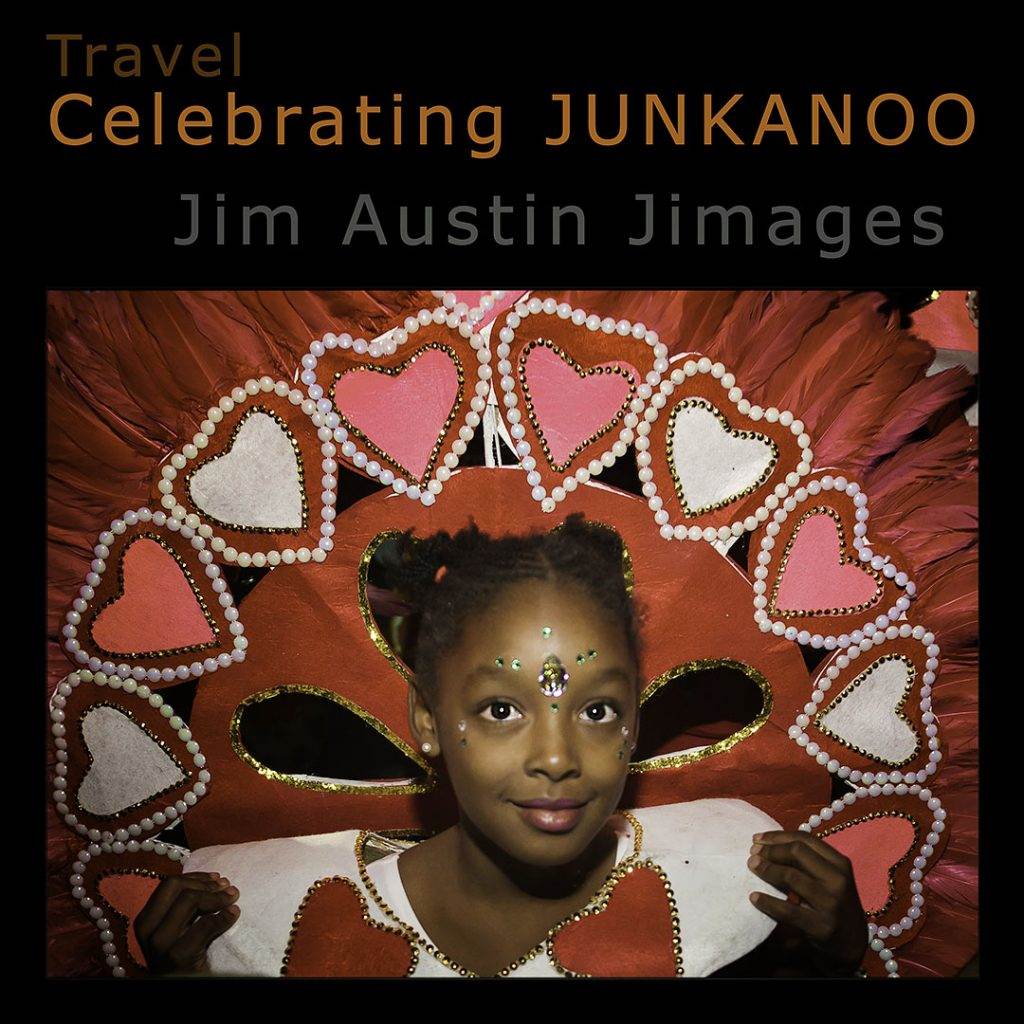
Cowbells clang. Whistles blast. Goat skin drums boom and trombones roll out melodies. In perfect time with the rhythms, fancy dancers whirl.
I’ve come to Governor’s Harbor in January 2019 to celebrate this historic cultural expression of Bahamian art. Tonight, it is all about Junkanoo.
Five groups from the island of Eleuthera stage their performance in Governor’s Harbor. They assemble their floats and head-and-shoulder costumes in staging areas off main street.



HISTORY
Junkanoo is quintessentially Bahamian. In a time of slavery, legend has it that Christmas time was the only time in thr entire year when those enslaved had time off, so they celebrated with music and dance. The name Junkanoo may have come from John Canoe, an African tribal chief who demanded his people’s right to celebrate in the West Indies when they were enslaved.
EMPATHY
As I travel in the Bahamas, I may only turn around this corner, at this time, in this place, only once. These inimitable moments are a singular combination of many alignments, perhaps like a number series that unlocks a safe. In these best moments, the “who, what, where, when and why” all come together in sync to make a photograph. When I am open and confident, I engage with other people, and making a portrait seems a natural conclusion to our interaction.
Let’s consider our relationship with our subjects. National Geographic photographer Greg Kahn tells photographers to explore something unfamiliar, when “spontaneous adventures often lead to unexpected images.”
But here is the thing: we can Engage with Empathy. Therefore, I believe we must go a bit deeper than exploring the unfamiliar. We might practice emotive empathy. Our brains let us do this.* What is emotive empathy? It is the ability to share in and guess the emotional state of our subject. At a deeper level, we can begin to guess what that person is thinking, and how they feel about getting their photograph taken. At Junkanoo, when dressed in costume, most people seem happy to do some performing, as this gentlemen did.

EMOTIVE EMPATHY
What role does emotive empathy have in travel photography? It means trying to share the emotions of another person. My photographic portraits tend to improve when I make time to practice these things: listening, smiling, trying to understand, reflecting back how I believe someone might feel and feeling with them, and waiting for the moment before I frame and make the image. These habits are some aspects of engaged emotional empathy. By the way, emotive empathy is not sympathy, nor is it being a Pollyanna.
ENGAGING
What does engaging mean? It means being charismatic, and open to the unfamiliar. On the street at a chaotic event like Junkanoo, it means staying loose, smiling first at someone even if they don’t look approachable, and making first contact to reach out.
When I am in this frame of mind, others see me as safer and more approachable, most of the time. As a result, the photography begins conversationally. This is exactly the opposite of the way we see the press aggressively photographing a notable person.
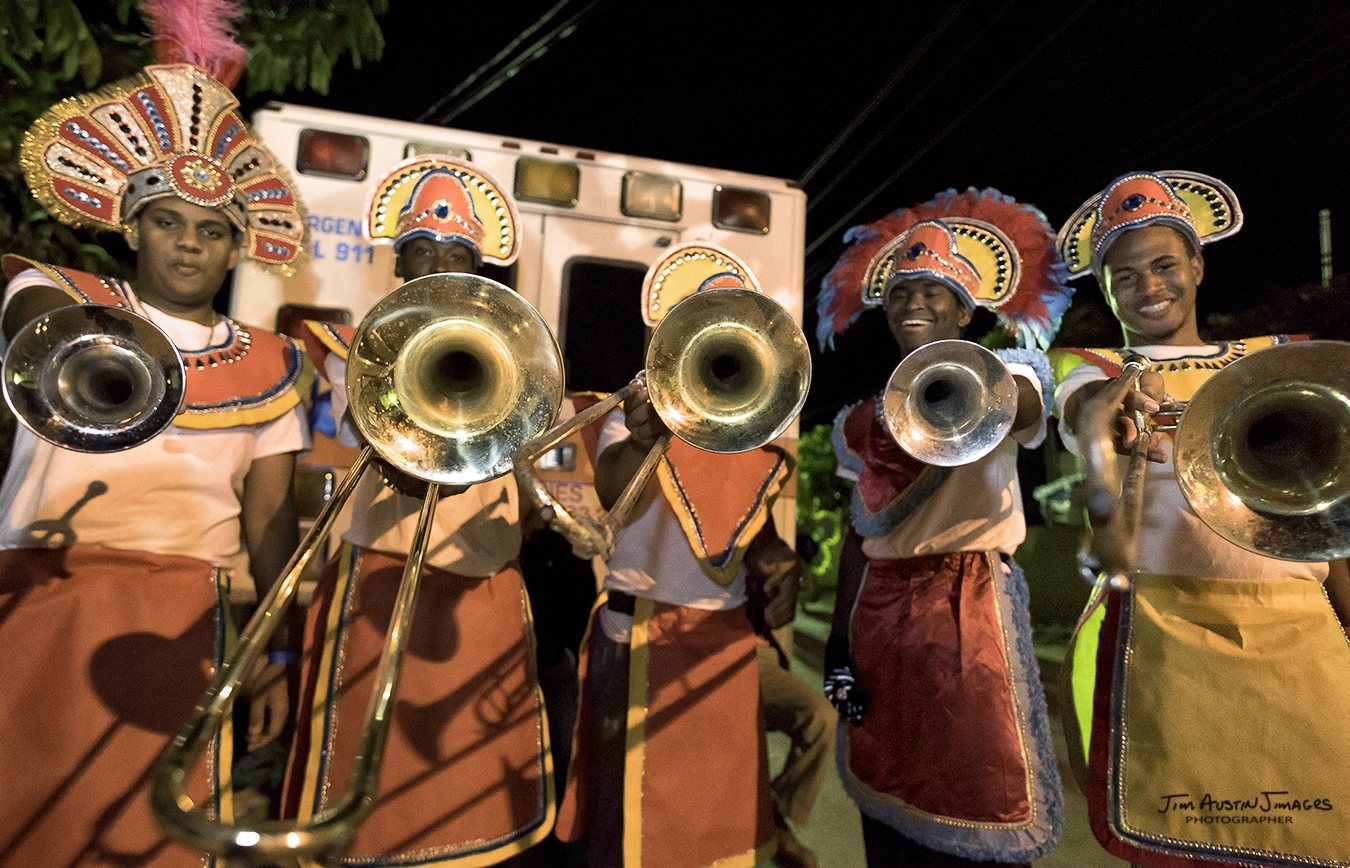
PHOTOGRAPHING
Photographing, I chose 50 and 20 mm lenses. The wide angle lens pushed me in closer to my portrait subjects, and the 50 was fast enough for night shooting. When the drums were a full volume, I gestured and smiled before moving in with a DSLR. The five groups I photographed included the Savannah Sound Lucayans, Harbour Island’s Barracks Hill Warriors, New Vision from Rock Sound, The Unity Builders, and the Harbour Boys from Governor’s Harbor.
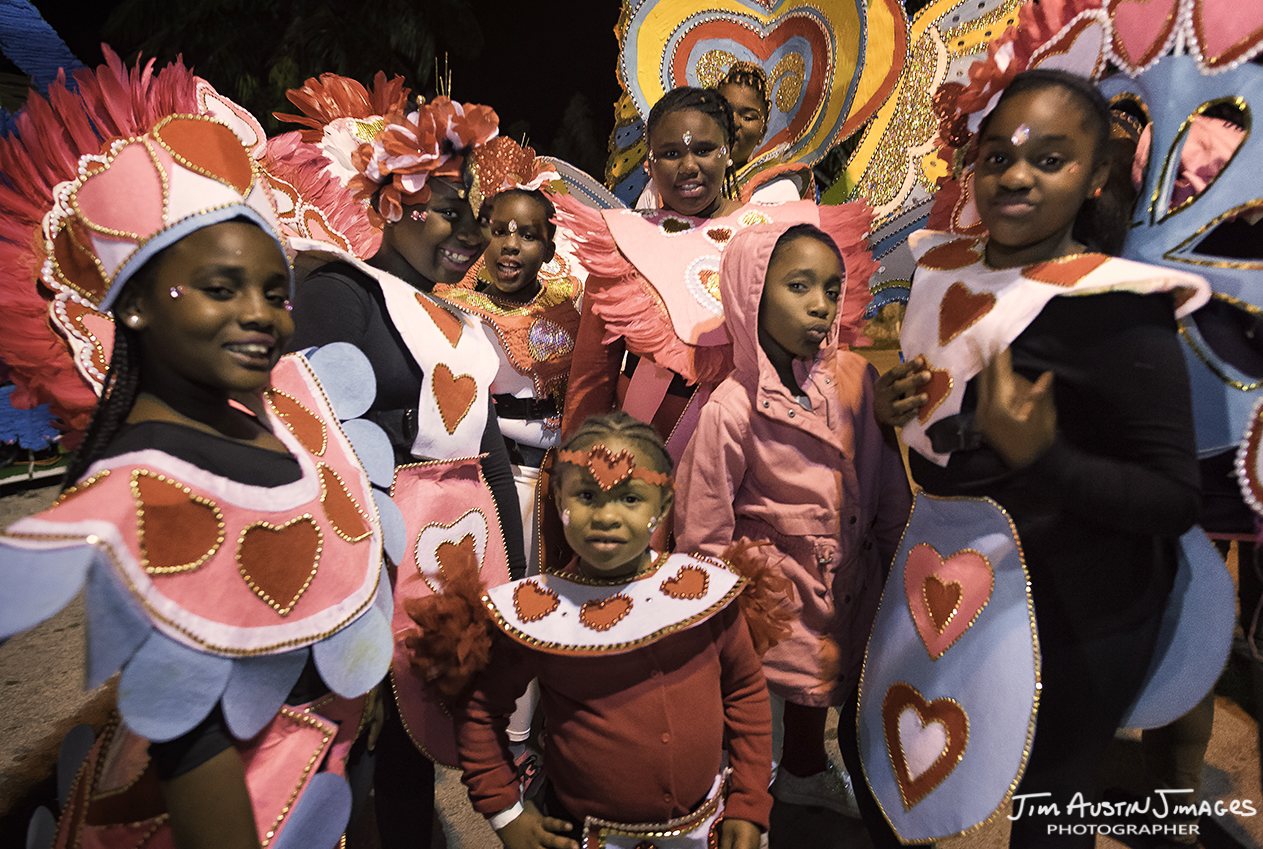
___
Note: “Our brain let’s us do this, with an amazing inner cosmos of brain countries we call the medial prefrontal cortex, anterior insula, anterior cingulate, anterior temporal cortex, and the amygdala in the right hemisphere.
For most of us, all these countries are intact, undamaged and we have good, working cells in these regions. These cells let us have emotive empathy, some specializing in recognizing facial expression, for instance. We know a little about these areas, from research with people who have had strokes in the brain areas, or have autism, trauma, or have lost all their ability to empathize.

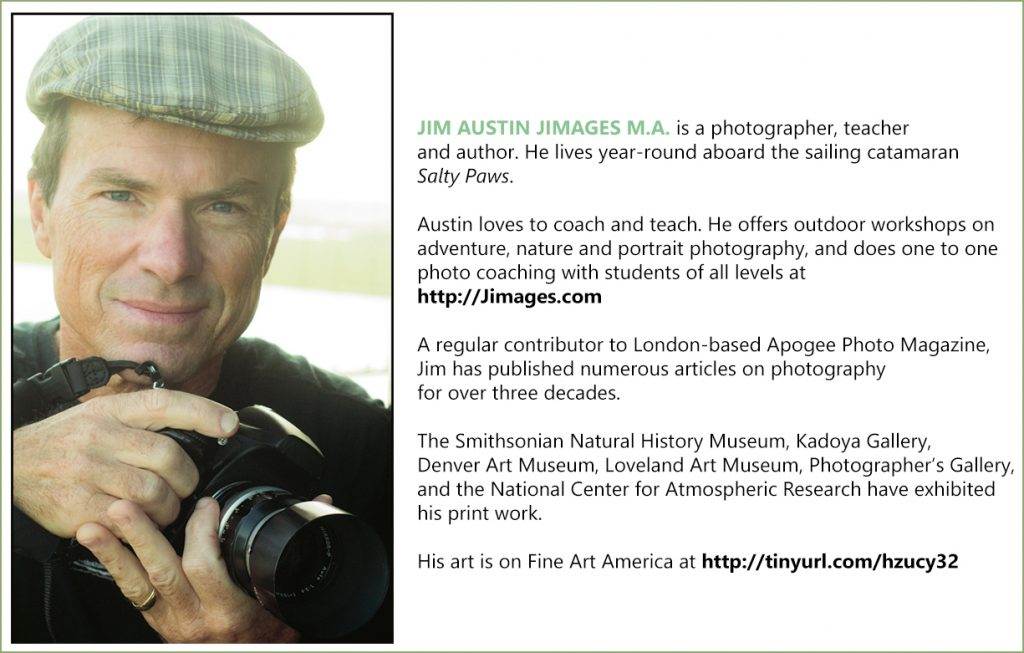
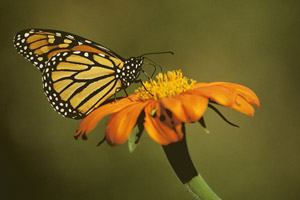
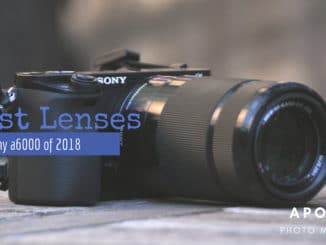

Leave a Reply